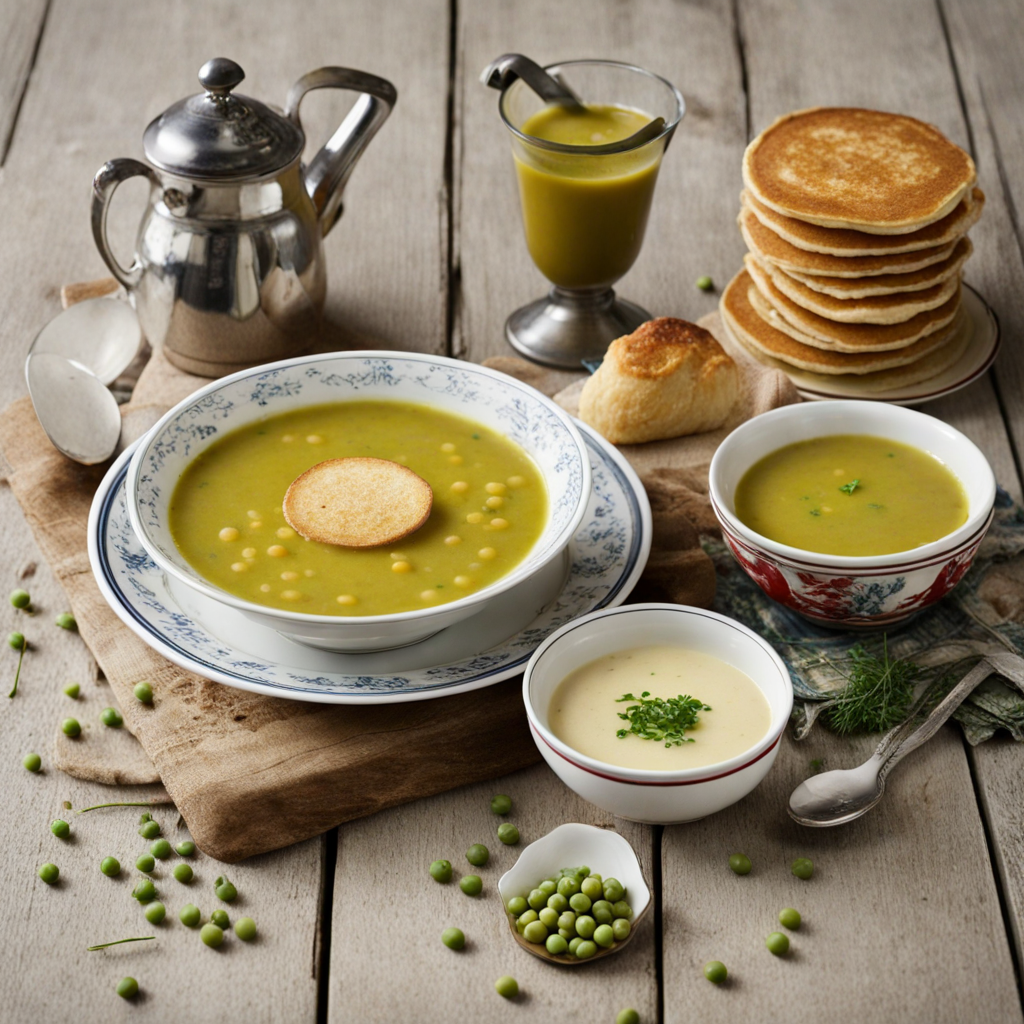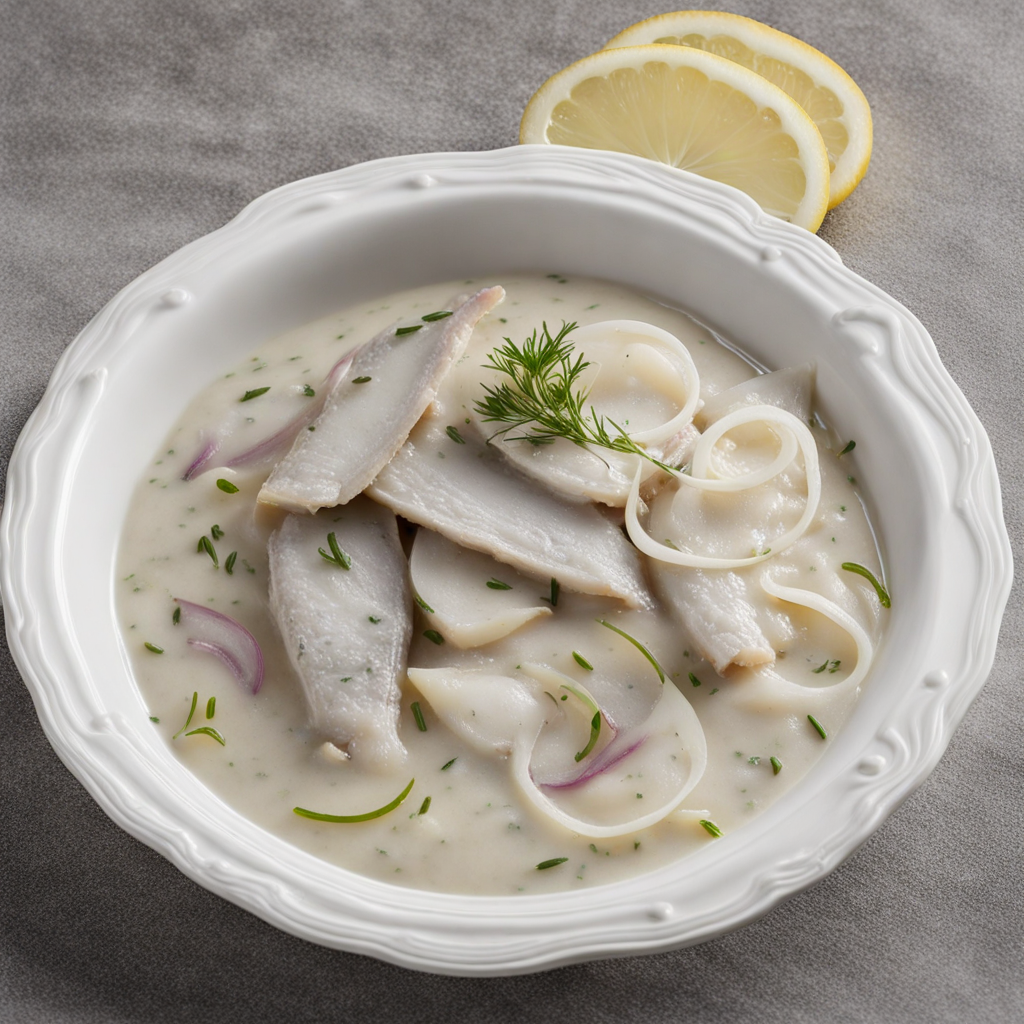Smoked Salmon
Smoked salmon, or "lax" as it's known in Sweden, is a celebrated delicacy that embodies the essence of Scandinavian cuisine. This dish typically features fresh, high-quality salmon that has been cured and then smoked to perfection, imparting a rich, complex flavor that balances both the briny taste of the sea and the subtle sweetness of the fish. The smoking process, often done over wood chips such as alder or juniper, adds a distinctive smokiness that enhances the natural qualities of the salmon. When sliced thinly, the silky texture and vibrant color of the salmon are truly a sight to behold. In Sweden, smoked salmon is often enjoyed in a variety of ways. It can be served on crispbread with a touch of cream cheese and fresh dill, or as part of a traditional smorgasbord, where it is accompanied by pickles, capers, and slices of red onion. The dish pairs beautifully with a glass of aquavit or a light white wine, allowing the flavors to complement one another. The combination of textures and tastes creates a delightful experience, where every bite offers a new layer of flavor that is both refreshing and satisfying. The cultural significance of smoked salmon in Sweden is profound, often associated with gatherings, celebrations, and traditional meals. It reflects the country's deep-rooted relationship with the sea and its commitment to sustainable fishing practices. Whether enjoyed in a casual setting or as part of a festive feast, smoked salmon is more than just a dish; it is a symbol of Swedish heritage and culinary artistry, inviting food lovers to explore its unique and unforgettable taste.
How It Became This Dish
Rökt Lax: A Culinary Journey Through Time and Tradition in Sweden Rökt lax, or smoked salmon, is a beloved staple in Swedish cuisine, evoking images of picturesque landscapes, bustling markets, and festive gatherings. Its history is as rich and layered as the delicate fillets of fish themselves, weaving together elements of geography, culture, and the evolution of food preservation techniques. To understand rökt lax fully, one must explore its origins, cultural significance, and the remarkable development it has undergone over time. Origins of Rökt Lax The story of rökt lax begins in the Nordic waters, where the cold, clear seas provide an ideal environment for salmon. Archaeological evidence suggests that humans have been fishing in these waters for thousands of years. The Sámi people, indigenous to the region, relied on salmon as a primary food source, using simple methods to catch and preserve fish. However, the practice of smoking fish as a means of preservation dates back to ancient civilizations around the world. In Sweden, the technique of smoking fish became particularly significant during the Middle Ages. The cold climate and long winters necessitated effective food preservation methods, as fresh food options dwindled. Utilizing smoke to cure salmon not only extended its shelf life but also imparted a unique flavor profile. The combination of salt, smoke, and the natural oils in the fish created a delicacy that would soon become integral to Swedish culinary traditions. Cultural Significance Rökt lax holds a special place in Swedish culture, serving as a symbol of both national pride and regional diversity. It is often featured in traditional Swedish celebrations, such as Midsummer and Christmas, where it graces the smörgåsbord - an elaborate buffet of dishes that showcases the country's culinary heritage. The salmon is typically served thinly sliced, garnished with dill, and accompanied by various condiments such as mustard sauce and crispbread. The significance of rökt lax extends beyond mere sustenance; it represents a connection to the land and sea, to generations of Swedish fishermen and families who have passed down the art of preparing and enjoying this delicacy. In modern Sweden, rökt lax is celebrated as a gastronomic treasure, often found in upscale restaurants and gourmet shops. It is not merely food; it is a cultural artifact that encapsulates the essence of Sweden's relationship with its environment. Development Over Time As Sweden moved through the centuries, the preparation and consumption of rökt lax evolved in tandem with social and technological changes. The 19th century marked a period of significant transformation due to industrialization and urbanization. As people migrated to cities in search of work, traditional food practices began to shift. Smokehouses, which had once been small, family-run operations, started to commercialize, leading to a more standardized product. The introduction of refrigeration and advances in food preservation techniques in the 20th century further changed the landscape of smoked salmon production. While traditional methods remained popular, the availability of modern technology allowed for greater consistency in flavor and quality. This shift also enabled rökt lax to reach a broader audience, both domestically and internationally. It became a popular item in supermarkets, delicatessens, and restaurants around the world, contributing to its status as a global delicacy. In recent years, there has been a resurgence of interest in artisanal food production, with a growing emphasis on sustainability and local sourcing. Many Swedish producers have returned to traditional smoking methods, using wood chips from native trees such as alder or birch to impart authentic flavors. This revival reflects a broader trend within the culinary world that values heritage, craftsmanship, and connections to the land. Rökt Lax in Contemporary Swedish Cuisine Today, rökt lax is more than just a traditional dish; it has become a versatile ingredient that transcends its origins. Chefs across Sweden and beyond experiment with smoked salmon in innovative ways, incorporating it into salads, pastas, and even sushi. Its delicate flavor pairs beautifully with a variety of ingredients, from creamy cheeses to tangy sauces, allowing for endless culinary creativity. Moreover, rökt lax has found a place in the global food landscape, influencing culinary practices in other countries. In the United States, for instance, smoked salmon has become a popular brunch item, often served on bagels with cream cheese and capers. This cross-cultural adoption speaks to the universal appeal of rökt lax and its ability to adapt to different tastes and dining experiences. Conclusion Rökt lax is a dish that embodies the essence of Swedish cuisine—simple, yet refined, with deep-rooted traditions that connect people to their history and environment. From its origins among indigenous communities to its place in contemporary culinary practices, the story of rökt lax illustrates the dynamic interplay between food, culture, and identity. As we savor each delicate slice of this smoked salmon, we partake in a rich narrative that spans centuries, celebrating not only the flavors of Sweden but also the resilience and ingenuity of its people. Whether enjoyed at a festive gathering, a quiet dinner, or as part of a gourmet meal, rökt lax remains a cherished symbol of Swedish culinary heritage, inviting us to share in its delicious legacy.
You may like
Discover local flavors from Sweden







